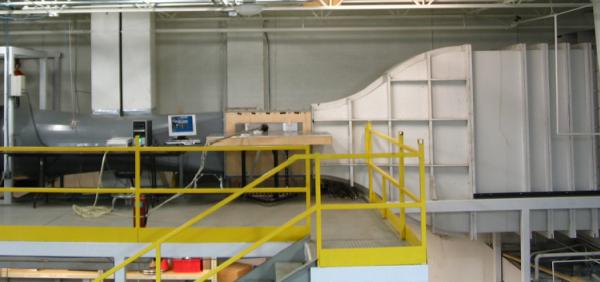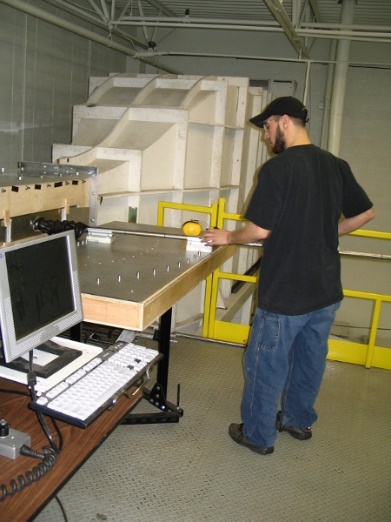Wind Tunnel Calibration of Velocity and Particulate Sampling Probes
by Robert Mudry, P.E. and Karolina Rak
There are a variety of probes used for flow measurement in gas streams, including hot wire, vane anemometer, and pressure differential, or pitot probes. For industrial applications, the S-type pitot probe is widely used because its large pressure ports make it resistant to pluggage from moist or particulate-laden flow streams. This probe is thus often used when measuring gas flow rates in the exhaust stream of industrial plants. These results are reported to the US Environmental Protection Agency (EPA) to accurately monitor pollution emissions from these plants.
The EPA provides the test protocol “Method 2”, which describes the proper use of the S-type pitot probe including guidelines on how to perform regular calibration of a probe in the controlled environment of a wind tunnel. With a proper calibration, the most accurate flow measurements are obtained in the gas streams of ducts and smokestacks at industrial sites.

ASC’s Wind Tunnel Testing Services
For over 30 years, Airflow Sciences Corporation (ASC) has been using its Livonia, Michigan wind tunnel (Figure 2) to calibrate a wide range of velocity probes. The tunnel test section has an area of 4 sq.ft, and its design with bell-mouth inlet and 125 HP fan exceeds all EPA specifications for calibrating probes. The wind tunnel has a velocity range up to 150 ft/s. Airflow Sciences provides complete velocity probe calibration services for Vane Anemometers and Hot Wire Anemometers as well as all types of differential pressure style probes, including S-Type Pitot Probes, 3D Velocity Probes, Dirty Air Pitot Tubes and, PM Emission Probes. Figure 3 shows a typical 3D velocity probe calibration.

3DDAS: An Accurate Measurement System
Airflow Sciences uses a data acquisition system called the 3DDAS to perform the calibrations. This measurement system includes fast response, accurate pressure transducers for probe DP and also measures important ambient conditions such as barometric pressure, temperature, and static pressure. The 3DDAS is capable of reading up to 5 pressures simultaneously, so it is used for standard pitot probes (S-type, pitot static, DAP) with a single pressure signal, or with 3-dimensional pitot probes (prism, spherical, DAT) with multiple pressure signals. The 3DDAS is shown in Figure 4 performing probe calibration at the University of Michigan wind tunnel at the Aerospace Engineering building in Ann Arbor.

Learn more :
